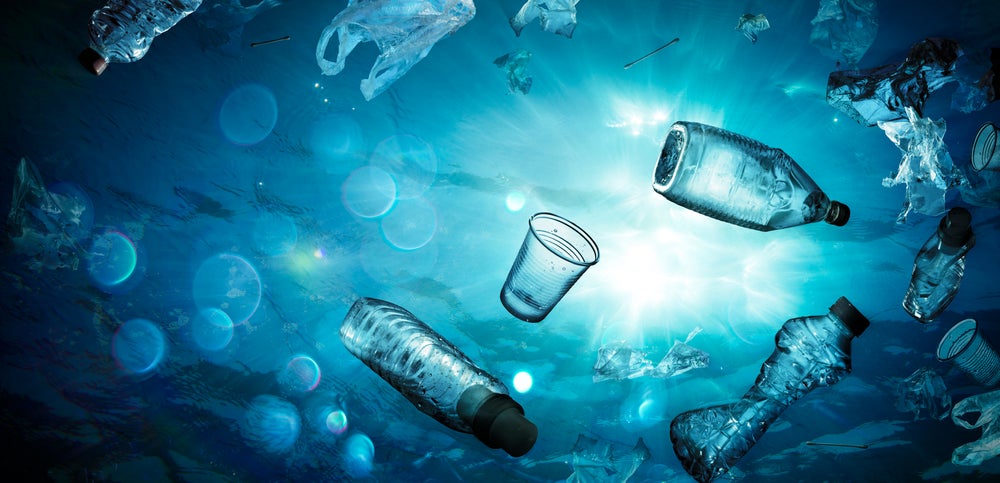While an incredibly useful resource for humans, plastic has become a blight on our ecosystems and planet. Due to its remarkable durability, plastic does not decompose easily, taking anywhere from 20 to 500 years to disintegrate. Even then, it never fully perishes but breaks down into smaller and smaller particles. Subsequently, when incorrectly disposed of, plastic waste can build up, harming ecosystems and polluting the environment.
Plastic-infested oceans
According to a report from the Organisation for Economic Co-operation and Development (OECD), humans already produce more than 400 million metric tons of plastic annually, which is projected to go on continuously increasing. Of this staggering figure, around 0.5% ends up polluting the oceans. While this may not seem like a large amount at first glance, it translates to around one million metric tons worth of ocean pollution. Given the incredibly long disposal time of plastics, pollution has continued to grow, contaminating our oceans and disturbing wildlife.
The majority of plastic that winds up in our oceans is transported there via rivers. In the event of storms and rough weather, plastic emissions in rivers can increase dramatically.
Rivers act as arteries, carrying objects into oceans. A study conducted by the Ocean Cleanup revealed that more than 1,000 rivers account for 80% of ocean plastic emissions. For many plastics that are washed out to sea, their final resting place is often coastal areas, which disrupts the coastal environment and leads to high cleanup costs.
Another byproduct of plastic polluting the oceans is the persistent issue of oceanic microplastic pollution. It can be relatively straightforward to remove larger pieces of plastic debris, but dealing with microplastics can be incredibly challenging. These microscopic particles, measuring five millimeters or smaller, are a troublesome pest to remove and have detrimental impacts on aquatic life.
So, what is the solution?
Dissolvable plastic-like material
Scientists at Japan’s Riken Research Institute, located near Saitama, have unveiled a newly developed material: a plastic-like substance that dissolves harmlessly in seawater. The material is built from food-safe ionic components, such as sodium hexametaphosphate and guanidinium salts. It mimics conventional plastic in strength and durability, but with a critical difference: it dissolves completely in saline, or salt water. Once it has dissolved, there are no traces of microplastics. It essentially vanishes. The material biodegrades into non-toxic byproducts that can enrich soil with nutrients such as phosphorus and nitrogen – a kind of vitamin tablet for the Earth.

US Tariffs are shifting - will you react or anticipate?
Don’t let policy changes catch you off guard. Stay proactive with real-time data and expert analysis.
By GlobalDataAn overdose of nutrients
It is easy to get excited about the idea of enriching the Earth’s soil, but Takuzo Aida, a material scientist at Riken, emphasises caution. He points out that while nutrients are beneficial, there is a risk of overloading the soil, which could still harm coastal ecosystems. It is a bit like our own bodies: eating vitamins is great, but too many can lead to health issues. This concern presents a significant hurdle for the widespread use of the new material. For now, the most prudent course of action is to recycle it at a controlled treatment facility.
Turning the tide against plastic pollution
This discovery could be a game-changer in our fight against ocean pollution and global pollution as a whole. By introducing dissolvable materials, we have the potential to address the problem at the source. This proactive approach not only supports clean-up efforts but also significantly lessens the environmental damage caused by plastic debris. It also promotes healthier ecosystems by allowing beneficial nutrients to flow back into the environment.
As we explore these sustainable options, we are on the brink of reducing our plastic footprint with eco-friendly alternatives. It is time to wave goodbye to plastic pollution and embrace a cleaner, greener future!






